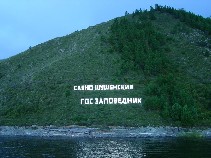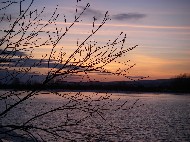How to reach us
117 Uritskogo Str.
Krasnoyarsk, RUSSIA
- e-mail:
- info@sayanring.com
- Open hours:
- Monday-Friday 10 am-7 pm
- Sat 11 am - 4 pm
- Sun - day off
Sayano-Shushenskiy State Biospheric Nature Reserve

The main Sayan Ridge in the centre of the West Sayan Mountains divides the Sayan Mountains, as well as the reserve, with the total area of 390.4 thousand hectares, into two completely different climatic and geographic territories. Here the northern Siberian taiga, rich in cedar (up to 1000 sq. km. of precious cedar forests ), meets Asian austerity of the southern plains (with the height of 500-2735 metres). In general the forest area covers 59% of the reserve territory, mountain steppes – 9,6%, tundra of all kinds – 19,4%, mountain mass – 11,9%. In such natural conditions a unique fauna of the central Sayan Mountains was formed: there coexist taiga inhabitants (sable, brown bear, musk deer), tundra representatives (Altai snowcock, Siberian mountain goat, long-tailed hamster, snow leopard protected by the Red Book of the RF), as well as northern guests (reindeer, rock and willow ptarmigan). The flora of the reserve is striking; with Siberian species prevailing, such as the Siberian cedar, Siberian larch, Siberian fir, spruce, pine, birch, aspen, bedstraw, Altai anemone, Siberian bluegrass, Arctic raspberry, endangered Siberian burena, yellow and showy ladies’-slipper, epipogium leafless, snowdon rose etc.
From the moment the reserve appeared (1976) and nowadays its workers protect the natural communities of the Sayan Mountains and study the influence of the Sayano-Shushensky reservoir on them, and as the reserve got the status of a biospheric reserve (1985), the ecological educational activity was only increased, particularly the development of ecologically reasonable and traditional forms of agriculture (taiga hunting, deer faming, tourism and recreation, cattle breeding) in adjacent territories of Krasnoyarsk region, Tuva.
The Ergaki massif, which is a part of the Sayano-Shushensky Nature Reserve, is a centre of the world sports tourism. Perfect relief and friction, as well as lots of free rock climbing attract participants of climbing championships and various alpiniads from the whole world. Five-feet depth of snow cover, not melting from the very September, perfect peaks of 1200-1600 meters above sea level and comfortable elevators made Ergaki a base for training Russian teams in skiing, biathlon, freestyle.

Backpackers are eager to conquer passes and climb the peaks, offering views of inexpressible beauty. Travelers certainly visit amazing lakes, each with its own character: hiding in the crowns of mighty cedar Bear Lake lurked (boulders on its bank resemble bears on watering) open to all winds is a deep lake Svetloe, Zolotarnoe lake with shores of huge stone plates, Ledyanoelake withfrozen banks and cold wind even in August. Lake of Artists, Mountain Spirits, Maloe Buybinskoe, Radujnoe and many other friendly welcome visitors.
Types of ecotourism vary a lot: trophy fishing in mountain lakes, photography, birdwatching . There are also "weekend itineraries": having accommodated at camp sites "Sleeping Sayan," "Mountain Oya", "Ergaki", "Cottages at Olenya River", "Zolotoi Us", you can enjoy the wildlife, swim in the pristine lakes, set for a horse trip or a walking tour.
Visit to the exhibitions in the Nature Museum, located in the administration building of the reserve, will enlarge your knowledge about the flora and fauna of the protected territories.
| Tweet | | Поделиться |




